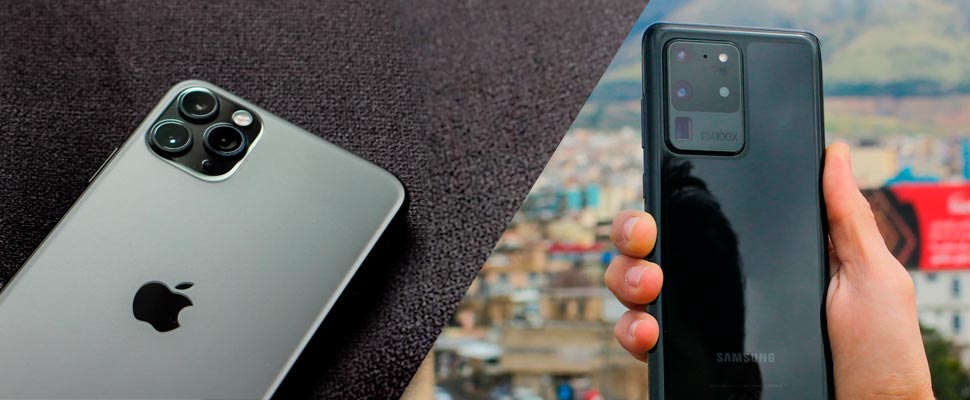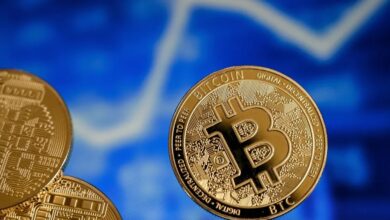These are the 3 highest-end smartphones of the main tech companies
If you plan to purchase a premium cell phone, these are the phones offered by the world's largest smartphone manufacturers .

These are high-end smartphones from the biggest brands in the industry. / Photos: Pexels
LatinamericanPost| Juan Manuel Bacallado
Listen to this article
Leer en español: Así son los 3 smartphones de más alta gama de las principales compañías
The best time to choose to buy a smartphone is now, since the coronavirus has affected the smartphone market considerably, reducing sales by up to 38%. For this reason, the BBC indicates that mobile device retail stores are offering smartphone promotions and offers in order to stimulate sales , since direct purchases in these stores have also been victims of the crisis as a result of the confinement and preventive closure of "not indispensable" companies.
However, in the future the price trend could be the opposite, since due to the strict quarantine implemented in China, the country where 70% of smartphones are manufactured, the available stock of the brands will decrease due to the lack of production and import drawbacks, therefore prices could increase between 6% and 10% depending on the type of terminal, according to Muy Interesante.
#Samsung sigue de líder del mercado movil y mejora sus números, mientras #Apple si a la baja, ahora superado por #Huawei, según estudio de IDC y Strategy Analytics, publicado el informe de 2019 pic.twitter.com/FmA8COD3GX
— Surfeando EnlaRed (@EnlaRed) May 1, 2019
So, if a person wants to buy a smartphone right now, promotions and discounts could incentivize them to dare and buy a high-end phone, in this case, the characteristics of the three big smartphone manufacturers will be analyzed: Samsung, Huawei, and Apple, which according to a study by Strategy Analytics, were the best-selling brands throughout 2019, Samsung with 20.9% of the market, Huawei with 17% and Apple with 14%.
To read later: Do not suffer anymore when choosing your smartphone: follow these simple tips
Among its flagship and highest-level smartphones are: Samsung Galaxy s20 Ultra, Huawei P40 Pro, and iPhone 11 Pro Max. This is what happens when the main characteristics of the three are compared:
iPhone 11 Pro vs Huawei P40 Pro vs Galaxy S20 Ultra
Choose your fav in the below
Follow my IG: @dukssjr #galaxy #huawei #iphone #tech pic.twitter.com/SILtCOT6bO— DUK$$ Tech (@dukssjr) April 13, 2020
Screen
If there is something fundamental it is the screen of a smartphone, in this case this group offers great benefits, the Apple terminal has according to CNET a resolution of 2,688px 1,242p for a density of 458ppp (pixels per inch), iPhone works with the SuperRetina technology on a 6.5-inch OLED panel at a frequency of 60Hz. For its part, Xataka reports that Huawei offers 441 dpi in its resolution of 2,640 x 1,200 pixels within an OLED screen that flows at 90Hz in a size of 6.58 inches.
Finally, Samsung incorporates the largest screen of the group with 6.9 inches in size, with a resolution of 3200 x 1440 pixels for a density of 511 dpi. Its Dynamic Amoled panel is updated at a frequency of 120Hz, when the latter is mentioned, it refers to the number of times a screen is “refreshed” every second, that is, 120 times per second, the higher the number the more fluid is the screen but also has more battery drain, although both Huawei and Samsung allow the screen to be set to 60Hz to save battery power.
Processor and performance
Snapdragon 865 vs A13 Bionic vs Kirin 990 Initial Performance Results Show Android-Based SoCs Are Closing the Gap https://t.co/2GGUsjtHc1 pic.twitter.com/TRWJglkdsW
— Wccftech (@wccftechdotcom) December 16, 2019
As for what moves the smartphone and gives it speed, the iPhone 11 Pro Max processor is its renewed A13 Bionic chip with 6 cores at 2650MHz 64 bits, while the P40 Pro has its own HiSilicon Kirin 990 processor, which has 8 cores that work separately according to the requirement of use and at 64 bits. Finally, the Galaxy s20 Ultra can vary according to the version, so they can bring their own Exynos 990 processor with 8 64-bit cores, this is usually in the version outside the United States, the other version is a Qualcomm SnapDragon 865 with 8 cores – both work depending on the requirement – 64 bits.
According to speed comparisons made by PhoneBuff, the fastest terminal among the three is the iPhone 11 Pro Max, however, when it comes to reopening already used applications, Apple's phone takes longer compared to the others in the group, between Samsung and Huawei, the first outperforms its opponent in both aspects. In addition, it is important to clarify that according to this same YouTube channel, the version of Samsung with Qualcomm SnapDragon is faster than the Exynos.
RAM is also a key point for the fluidity of the phone, of which the iPhone 11 Pro supplies 4gb, the Huawei provides 8gb and Samsung 16gb, however, the difference between what it takes Huawei and Samsung to open already used applications is minimal in favor of the Galaxy.
Cameras
A todo esto, aprovechando que la luna estaba linda para fotografiar, probé un par de tiros (con zoom máximo) al Huawei P40 Pro, Samsung Galaxy S20 Ultra y un iPhone 11 Pro Max. Adivinen cuál es cuál. pic.twitter.com/RNwA0BJqUY
— Felipe Ovalle (@FelipeOvalle) May 10, 2020
A point for which the three terminals are well prepared, since Apple has three rear cameras: a main one of 12mp and f / 1.8, a wide angle of 120 degrees with 12mp and f / 2.4 and a telephoto lens of 12mp with f / 2.0, allows record at maximum 4K at 60fps and has “cinematic” stabilization to record at 4K, its front camera is also 12mp f / 2.2.
Huawei offers four cameras graduated by the Leica photographic company, a main one of 50mp to f / 1.9, a wide angle of 40mp f / 1.8, a telephoto of 12mp f / 3.4 and a ToF sensor for depth detection, its front camera is double with A main 32mp f / 2.2 and infrared sensor for depth and face unlock, both sides can record at 4K 60fps and have an audio zoom to increase the sound emitted by the focused object.
Finally, the Galaxy s20 Ultra offers four rear cameras with a main of 108mp f / 1.8, a wide angle of 12mp f / 2.2, a telephoto of 48mp f / 3.5 and a ToF sensor for depth detection, on its front it has a 40mp camera, Samsung allows recording at a maximum resolution of 8K at 24fps, it also has a "super stabilizer" for videos.
Battery
For the duration of its use, Apple includes a 3969 mAH battery, 4200mAH Huawei and 5000mAH Samsung, according to tests conducted by CNET, the Galaxy s20 Ultra has the longest battery life of the group with 21 hours of use, then there is the Huawei P40 Pro with 20 hours and 40 minutes -both tested with the screen at 60Hz- and finally, the iPhone 11 Pro Max with 18 hours and 8 minutes, all have fast charge, Apple's is 18 watts, charging the 50% in half an hour, that of Huawei is 40 watts and charges 100% in 1 hour and Samsung charges 25 watts reaching 50% in 15 minutes.
Additional features
Beyond the four main characteristics of these smartphones, other aspects such as protection must be considered, all three have maximum protection against water and dust IP68, Samsung has Gorilla Glass 6 to protect your screen from scratches, Apple has its system, like Huawei, none have a headphone jack input. The latest generation of WiFi is present in all and Huawei has the latest version of BlueTooth 5.1, Apple and Samsung have 5.0. Huawei is the only one without Dolby Atmos audio due to US sanctions that have directly affected it. Finally, Samsung and Huawei already incorporate 5G network capacity in their models, while Apple has not included it yet.
Price
The iPhone 11 Pro Max is in Amazon USA at a price of $ 1099 in its 64GB version of storage, the Huawei P40 Pro is at $ 949 starting at 256GB – its minimum capacity – and the Samsung Galaxy s20 Ultra is in $ 1199 with 128gb of storage.




